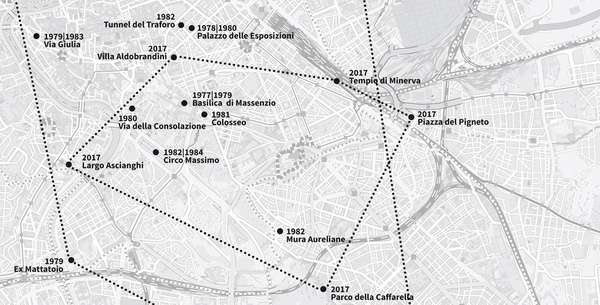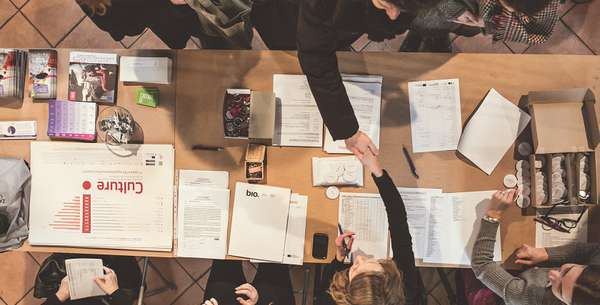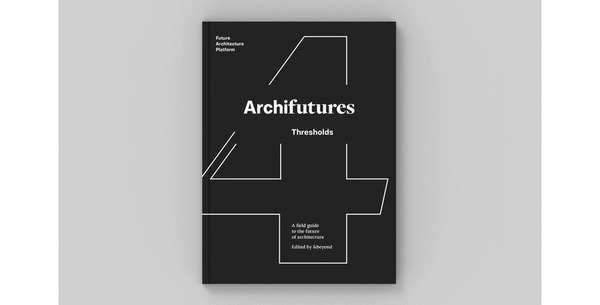Idea by
Florian Bengert
BNGRT
Call for ideas 2017
Space in Time
Space in Time
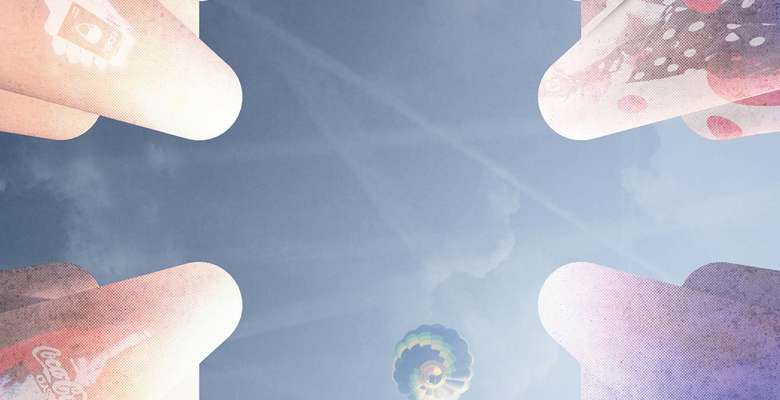
Modernity is a world in motion and logistics control this world. Goods, people, resources, capital, data and images move with increasing speed over long distances. In the quest for ever-new competitive advantages based on speed the logistical modernity replaces natural and urban terrain with undirected space and virtual surfaces, e.g. the virtual online shop with an "invisible" logistics center in the background. The complexity of human and urban space, however, finds no place here. Against this background, the design questions the singularity of logistical time and is searches for the SPACE IN TIME. Architectural occupations are proposed which can be embedded in these infrastructures and make use of the special features of their logistical DNA. The aim is to develop design strategies for programmatically, spatially and architecturally enriched infrastructures, transforming the strategic space of logistics into habitable space – experienceable architectural and urban terrain.
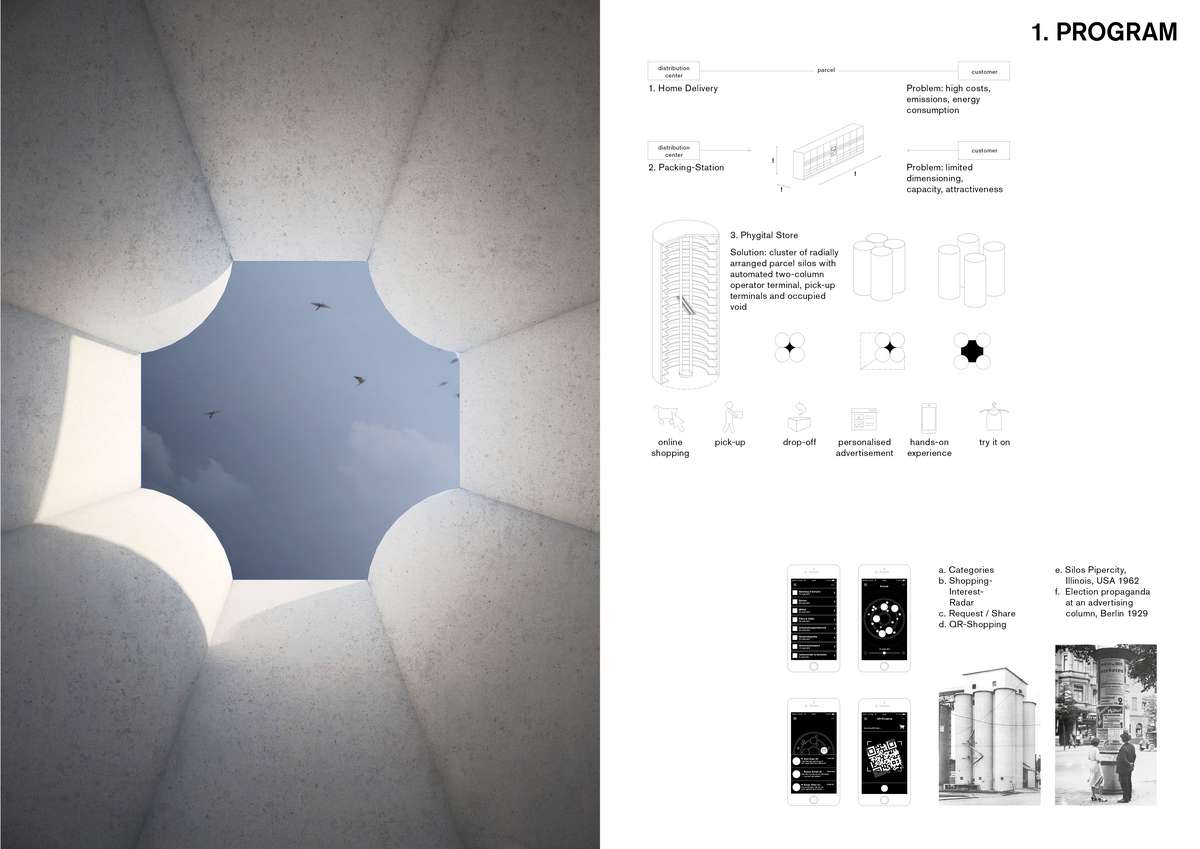
1. PROGRAM
Due to individual customer requests, the number of parcel transports increases, but the proportion of packages that can be successfully delivered during the first delivery attempt is very low. This is a development which is completely contrary to the necessary challenge of the reduction of greenhouse gases and energy consumption. Increasing automation of parcel pick-up and drop-off processes can counteract this and at the same time lead to increasing customer satisfaction.
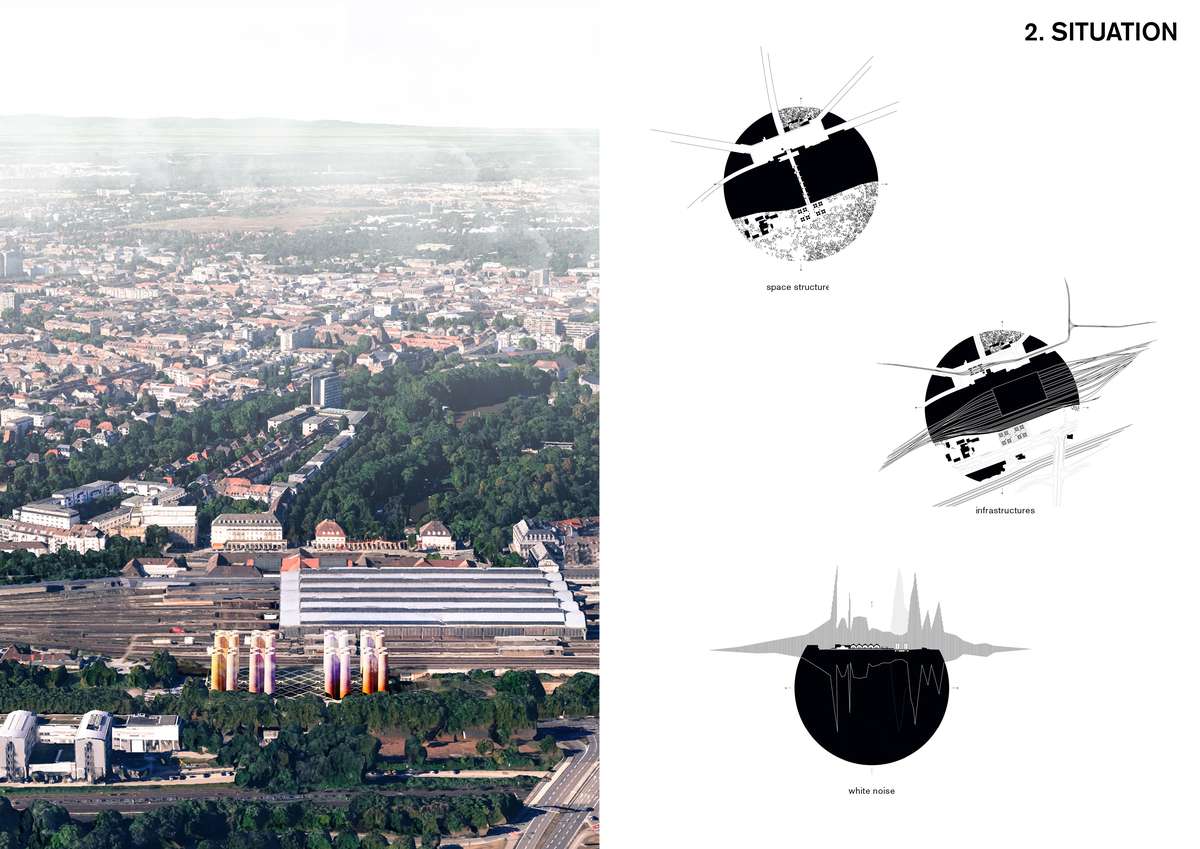
2. SITUATION
Due to its inner city location, good connections and high commuter traffic, the Karlsruhe Railway Station is an ideal location to act as a prototypical implementation of the phygital stores. The term phygital describes the symbiotic relationship between physical and digital. Products of such a phygital store move between physical and digital space.

3. STRUCTURE
A store as such is storage (verb: to store) and sale (noun: a store) at the same time, as shopping and package storage/parcel box overlay. The classic vendor-buyer structure is however abolished, since the basis of the shopping represent mobile devices (mCommerce) and online orders.
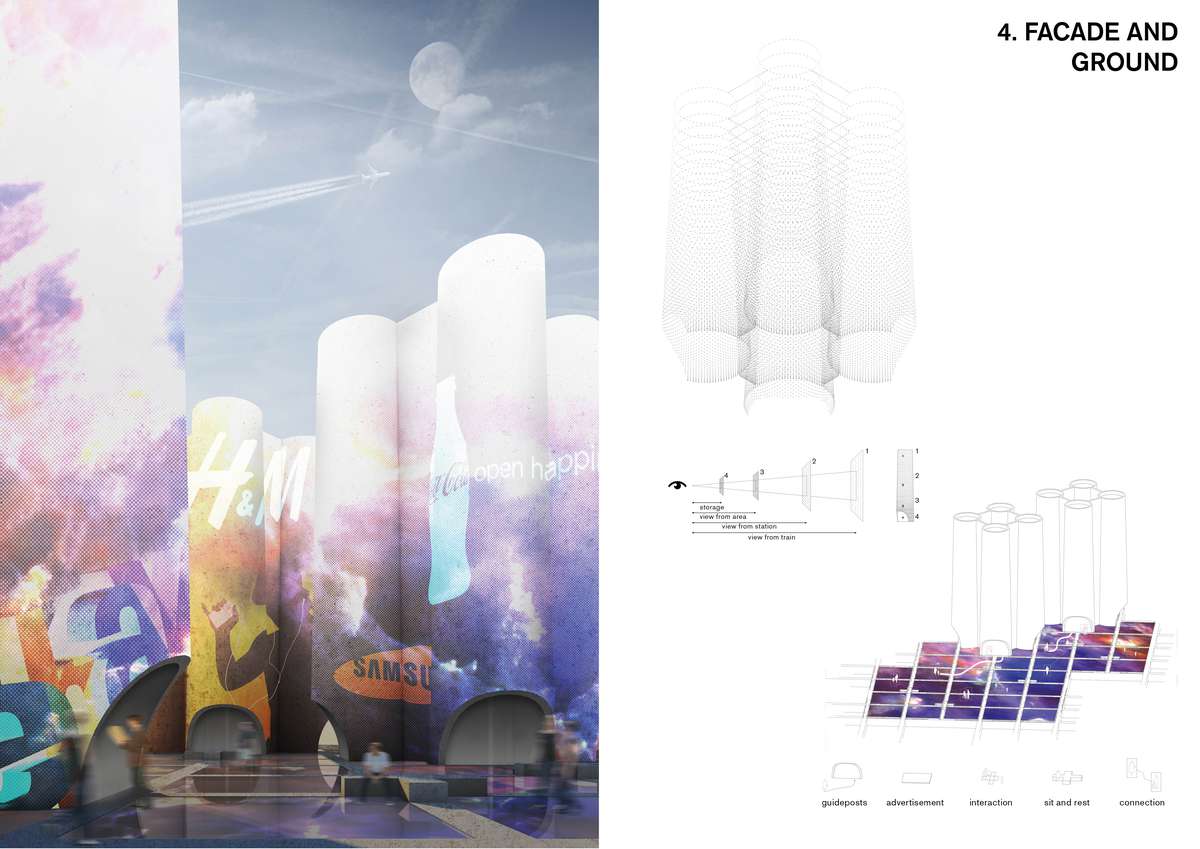
4. FACADE AND GROUND
With the smartphone you walk through the building and you can look at showrooms and concept stores products and then order them. In order to compensate for the lost aspects of online shopping, buyers can use an app in the sense of sharing networks: Users who are looking for the same are displayed to each other and can exchange. For example, wrongly ordered goods can be passed directly if someone is looking for it.
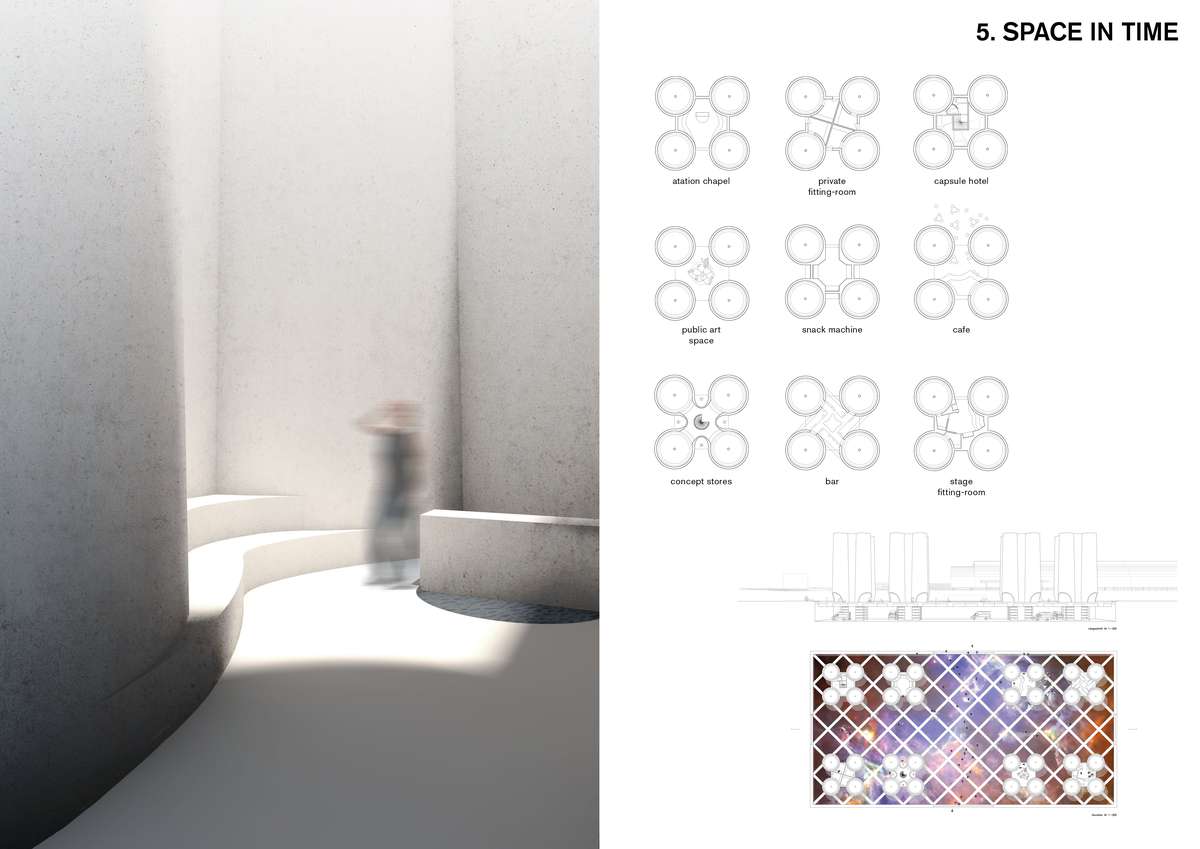
5. SPACE IN TIME
The interspaces, generated by the parcel towers, are filled with a wide range of uses, which complement the online world, thus placing the dualism of virtuality and the new public in reality. Dressing rooms for online ordering, bar and cafe for exchange, concept stores, a station chapel or a capsule hotel: They are the SPACE IN TIME.
Space in Time
Space in Time

Modernity is a world in motion and logistics control this world. Goods, people, resources, capital, data and images move with increasing speed over long distances. In the quest for ever-new competitive advantages based on speed the logistical modernity replaces natural and urban terrain with undirected space and virtual surfaces, e.g. the virtual online shop with an "invisible" logistics center in the background. The complexity of human and urban space, however, finds no place here. Against this background, the design questions the singularity of logistical time and is searches for the SPACE IN TIME. Architectural occupations are proposed which can be embedded in these infrastructures and make use of the special features of their logistical DNA. The aim is to develop design strategies for programmatically, spatially and architecturally enriched infrastructures, transforming the strategic space of logistics into habitable space – experienceable architectural and urban terrain.

1. PROGRAM
Due to individual customer requests, the number of parcel transports increases, but the proportion of packages that can be successfully delivered during the first delivery attempt is very low. This is a development which is completely contrary to the necessary challenge of the reduction of greenhouse gases and energy consumption. Increasing automation of parcel pick-up and drop-off processes can counteract this and at the same time lead to increasing customer satisfaction.
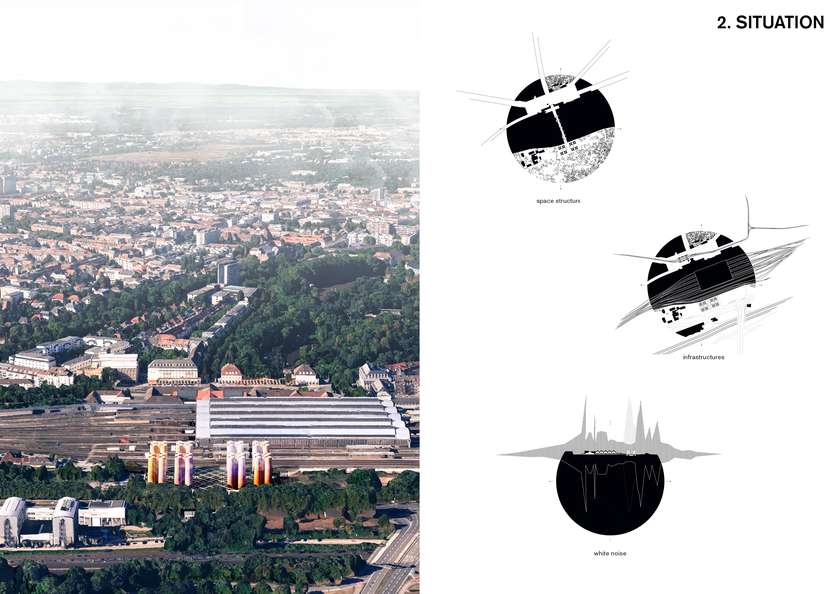
2. SITUATION
Due to its inner city location, good connections and high commuter traffic, the Karlsruhe Railway Station is an ideal location to act as a prototypical implementation of the phygital stores. The term phygital describes the symbiotic relationship between physical and digital. Products of such a phygital store move between physical and digital space.
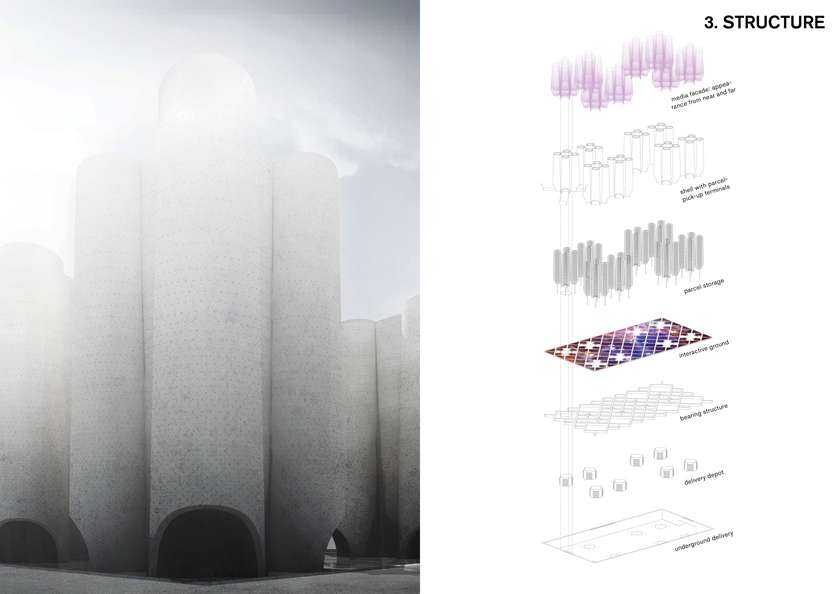
3. STRUCTURE
A store as such is storage (verb: to store) and sale (noun: a store) at the same time, as shopping and package storage/parcel box overlay. The classic vendor-buyer structure is however abolished, since the basis of the shopping represent mobile devices (mCommerce) and online orders.
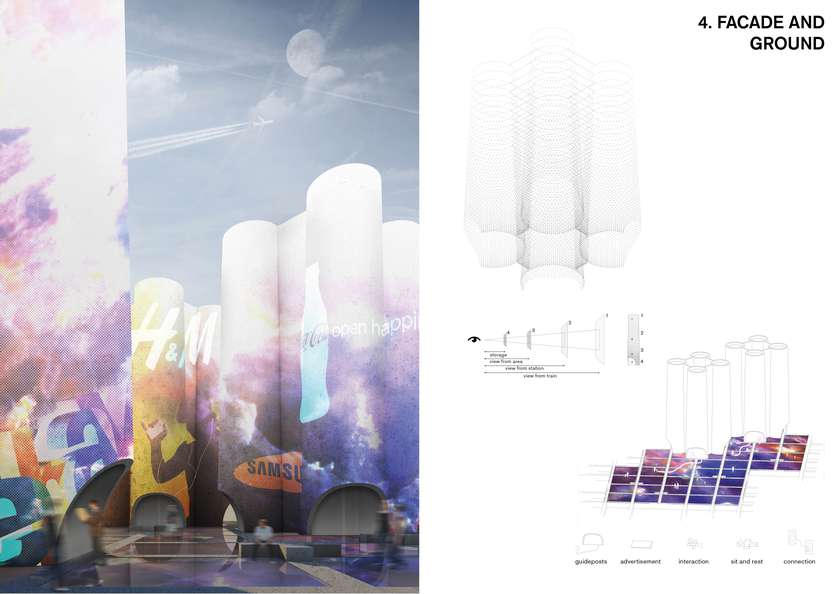
4. FACADE AND GROUND
With the smartphone you walk through the building and you can look at showrooms and concept stores products and then order them. In order to compensate for the lost aspects of online shopping, buyers can use an app in the sense of sharing networks: Users who are looking for the same are displayed to each other and can exchange. For example, wrongly ordered goods can be passed directly if someone is looking for it.

5. SPACE IN TIME
The interspaces, generated by the parcel towers, are filled with a wide range of uses, which complement the online world, thus placing the dualism of virtuality and the new public in reality. Dressing rooms for online ordering, bar and cafe for exchange, concept stores, a station chapel or a capsule hotel: They are the SPACE IN TIME.
